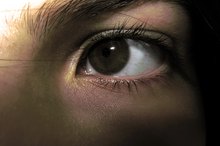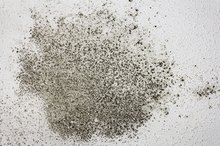What Are the Effects of Breathing in Mold or Mildew?
Mold and mildew, found everywhere in the environment, are both fungi that need to be in moist areas to grow. Areas that are dark and have poor air quality can also contain mold and mildew. These fungi will eventually damage the surfaces they grow on by spreading seeds or spores. These spores can enter the air and be inhaled, or come into contact with your skin. While not always harmful, inhaling or touching mold or mildew can cause both minor and serious symptoms in some people.
If you are experiencing serious medical symptoms, seek emergency treatment immediately.
Allergies and Asthma
Breathing in too much mold or mildew can cause allergies. In severe cases, it can also contribute to the development of asthma. Asthma or prior allergies before exposure can make these symptoms worse. Symptoms will vary -- some people are more sensitive to mold than others.
- Breathing in too much mold or mildew can cause allergies.
Infections
Side Effects of Mold Inhalation
Learn More
The body's immune system is designed to fight off foreign particles such as mold or mildew that enter the system. However, if high amounts of mold or mildew are breathed in, the body may not be able to get rid of it all or the immune system can over-respond. Both of these situations can cause upper respiratory infections. These infections cause many of the same symptoms as allergies and asthma. The likelihood of this complication is higher when exposed to high levels of mold and mildew or in those with compromised immune systems.
- The body's immune system is designed to fight off foreign particles such as mold or mildew that enter the system.
- The likelihood of this complication is higher when exposed to high levels of mold and mildew or in those with compromised immune systems.
Skin Irritation
If mold or mildew is inhaled or contacts the skin, rashes or dermatitis can occur. Mold exposure can lead to burning sensations in the skin, eyes, nose, throat and lungs. Athlete's foot and yeast infections are other possible complications. Sensitivity to mold exposure can increase over time and with repeated exposure. Reactions can occur whether the mold spores are living or dead.
- If mold or mildew is inhaled or contacts the skin, rashes or dermatitis can occur.
- Mold exposure can lead to burning sensations in the skin, eyes, nose, throat and lungs.
Organ Damage and Cancer
Symptoms of Inhaling Mold
Learn More
Certain molds produce substances called mycotoxins. These substances grow outdoors on grains and in agricultural areas. In these environments, they feed on dead plants and other organic waste materials, preventing them from accumulating. However, mycotoxins may also be present indoors, in buildings that have been damaged by moisture, such as leaking pipes or poorly-controlled humidity. They may also suppress immune system activity.
- Certain molds produce substances called mycotoxins.
- However, mycotoxins may also be present indoors, in buildings that have been damaged by moisture, such as leaking pipes or poorly-controlled humidity.
Related Articles
References
- Environmental Health Perspectives: Respiratory and Allergic Health Effects of Dampness, Mold, and Dampness-Related Agents -- A Review of the Epidemiologic Evidence
- Amirhosein Ghaffarianhoseini, Husam AlWaer, Hossein Omrany, Ali Ghaffarianhoseini, Chaham Alalouch, Derek Clements-Croome & John Tookey (2018) Sick building syndrome: are we doing enough?. Architectural Science Review,61:3, 99-121.
- American College of Allergy, Asthma & Immunology. Mold Allergy. Reviewed April 23, 2018.
- Centers for Disease Control and Prevention. Fungal Diseases. Reviewed May 6, 2019.
- Centers for Disease Control and Prevention. Mold. Basic Facts. Reviewed December 20, 2017
- Asthma and Allergy Foundation of America. Mold Allergy. Reviewed October 2015.
- Centers for Disease Control and Prevention. Molds in the Environment. Rreviewed December 20, 2017.
- Asthma and Allergy Foundation of America, Mold Allergy
- Centers for Disease Control and Prevention (CDC), Mold, Basic Facts
- Rudert A, Portnoy J.Mold allergy: is it real and what do we do about it?Expert Rev Clin Immunol. 2017 Aug;13(8):823-835. doi: 10.1080/1744666X.2017.1324298. Epub 2017 May 17.
Writer Bio
I hold a Master's degree in exercise physiology/health promotion. I am a certified fitness specialist through the American College of Spots Medicine and an IYT certified yoga teacher. I have over 25 years experience teaching classes to both general public and those with chronic illness. The above allows me to write directly to the reader based on personal experiences.







